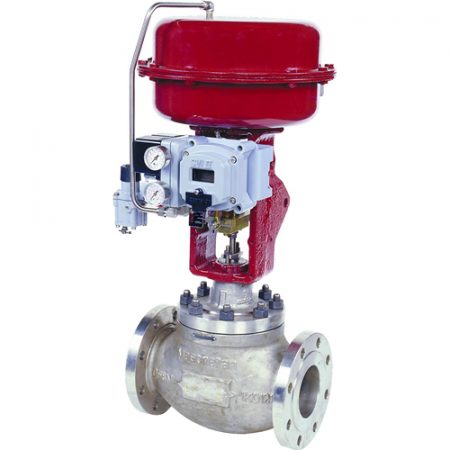
Maximize Power Cost Savings and Comfort With Advanced Building Automation Controls
In the realm of modern-day style and center monitoring, the assimilation of sophisticated building automation regulates stands as a crucial development. The convergence of technology and sustainability has actually birthed a new era where energy efficiency, comfort optimization, and operational streamlining are no more obtainable realities however far-off aspirations. By using the power of automation, structures can adjust, react, and advance in manner ins which were as soon as unbelievable. The capacity for significant power cost savings and enhanced convenience is not simply a pledge but an opportunity waiting to be met. This paradigm change in building administration holds the key to opening a world where ecological conscientiousness and resident health harmoniously coexist within the wall surfaces of our frameworks.
Power Efficiency Perks
Power performance advantages can substantially reduce energy usage and operational costs in structures. Energy-efficient systems, such as innovative structure automation controls, can enhance the use of resources like cooling, lights, and home heating, leading to lower energy expenditures over time.
Furthermore, enhanced energy performance can extend the lifespan of structure equipment and systems. By running extra effectively, HVAC systems, lighting fixture, and various other structure components experience much less deterioration, resulting in reduced maintenance and substitute costs. In addition, energy-efficient buildings frequently command higher residential property values and rental prices, providing long-term economic benefits to proprietors.
Additionally, power performance can improve passenger comfort and efficiency. Properly managed indoor settings with optimal illumination and thermal problems develop a more helpful and pleasant work space, bring about improved worker complete satisfaction and efficiency. Overall, the power efficiency advantages connected with advanced building automation controls are complex, incorporating cost savings, environmental stewardship, and occupant wellness.
Boosted Convenience Control
Enhancing comfort control in building environments needs an innovative combination of sophisticated automation systems for optimal occupant health. By utilizing advanced structure automation controls, centers can tailor the interior setting to fulfill the certain requirements and preferences of occupants. control valves.
By integrating these innovative controls, buildings can not only improve convenience however likewise enhance power efficiency by enhancing system procedures based on actual tenancy and usage patterns. Eventually, focusing on resident convenience via sophisticated automation systems leads to an extra pleasurable and much healthier interior atmosphere.
Operational Effectiveness Improvements

In addition, the implementation of real-time monitoring and analytics devices allows building drivers to identify power ineffectiveness and operational anomalies immediately. By continually checking energy use patterns and system performance metrics, adjustments can be made in real-time to enhance energy usage and make sure peak functional efficiency. control valves. Furthermore, incorporating need response techniques right into structure automation controls can better boost operational effectiveness by dynamically changing power use based upon grid conditions and rates signals
Indoor Environment Optimization
Efficient indoor climate optimization is a basic aspect of structure automation controls, ensuring residents' comfort and wellness while maximizing energy cost savings. By making use of sophisticated sensing units and controls, developing automation systems can continuously keep an eye on and readjust temperature level, humidity levels, air quality, and ventilation to develop go an optimum interior setting. Keeping regular and comfy conditions not only boosts owner complete satisfaction however likewise enhances performance and total health.
Interior climate optimization also plays a vital role in energy efficiency. By fine-tuning cooling, heating, and air flow systems based on real-time information and occupancy patterns, building automation controls can substantially minimize energy consumption - control valves. Carrying out techniques such as demand-controlled air flow and thermal zoning can help reduce power waste while making sure that each area of the structure receives the essential conditioning.

Sustainable Setting Creation
Building automation controls not only maximize interior environment problems for power performance and passenger comfort but also lay the foundation for producing a lasting atmosphere through strategic management of systems and resources. By incorporating advanced building automation modern technologies, such as sensing units, actuators, and intelligent software application, facilities can adjust and monitor power use in real-time to lessen waste and decrease their carbon impact. These systems allow predictive upkeep, identifying prospective concerns before they intensify and enhancing equipment efficiency to enhance long life and effectiveness.
Furthermore, lasting atmosphere production prolongs beyond power management to encompass water preservation, waste reduction, and interior air high quality improvement. Structure automation controls can regulate water use, identify leakages, and guarantee proper waste disposal techniques, adding to overall sustainability initiatives. In addition, by checking and controlling air flow and filtering systems, these modern technologies enhance owner health and performance while reducing power intake associated with cooling and heating operations.
Final Thought
To conclude, advanced building automation regulates deal significant benefits in terms of power savings, comfort control, functional performance, indoor climate optimization, and developing a sustainable atmosphere. By applying these controls, buildings can accomplish ideal performance while decreasing energy consumption and improving resident site link convenience. It is evident that using innovative automation modern technology is important in improving structure efficiency and producing an extra lasting future.
Power performance advantages can significantly reduce energy consumption and functional expenses in structures. In general, the power effectiveness advantages connected with innovative building automation controls are diverse, encompassing expense financial savings, ecological stewardship, and passenger wellness.
Furthermore, integrating demand response approaches right into structure automation controls can additionally improve operational efficiency by dynamically readjusting energy usage based on grid problems and rates signals.
Structure automation manages not only maximize indoor environment problems for power effectiveness and occupant convenience however also lay the structure for producing a sustainable setting with tactical management of systems and resources.In conclusion, advanced building automation regulates offer substantial benefits in terms of power financial savings, comfort control, functional effectiveness, interior environment optimization, and creating a sustainable environment.